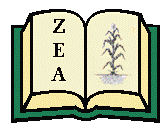Files
Download Full Text (18.8 MB)
Description
Along the coast of Peru is one of the driest deserts in the world. Here, under the sand, the ancient Peruvians buried their dead wrapped in gorgeous textiles. As organic material keeps almost forever when stored without humidity, light and oxygen, many of the mummies excavated in the last hundred years are in excellent conditions. And so are the textiles wrapped around them. Their clear colors are still dazzling and the textile fibers in good condition. Textiles were highly valued objects in ancient Peru – used for expressing status and diverse messages in these non-literate but highly organized and very developed cultures. Much energy, innovation and aesthetic sensibility were invested in the textiles. The preColumbian peoples had access to exquisite materials: the local fibers were camelid fibers (alpaca and vicuña), cotton and plant fibers (agave, for instance). The camelid fibers have very little scales compared to sheep fibers, and are long, soft and lustrous. The Peruvian cotton grew in 5 different colors. The ancient Peruvians were also master dyers and have for thousands of years dyed their yarn with indigo blue, madder red, cochineal red, sea snail purple and yellow from many kinds of plants. And so they produced some of the finest, most beautiful and most interesting textiles in the world. Instead of writing, they kept the order in their world encoded in textile fibers. The Roemer- and Pelizaeus-Museum in Hildesheim houses a collection of 405 preColumbian textiles. Most of them are fragments, but a few complete pieces are present. I have chosen 133 pieces for this publication, to represent the collection at its best.
ISBN
978-1-60962-166-7
Publication Date
1-14-2020
Publisher
Zea Books
City
Lincoln, NE
Keywords
Peru, textiles, mummies, Nazca, Lambayeque, Paracas
Disciplines
Arts and Humanities | Fiber, Textile, and Weaving Arts | History of Art, Architecture, and Archaeology | Indigenous Studies | Museum Studies | Other History of Art, Architecture, and Archaeology
Recommended Citation
Bjerregaard, Lena, "The preColumbian Textiles in the Roemer- and Pelizaeus-Museum Hildesheim, Germany" (2020). Zea E-Books Collection. 84.
https://digitalcommons.unl.edu/zeabook/84

Included in
Fiber, Textile, and Weaving Arts Commons, Indigenous Studies Commons, Museum Studies Commons, Other History of Art, Architecture, and Archaeology Commons


Comments
Copyright 2020 Lena Bjerregaard